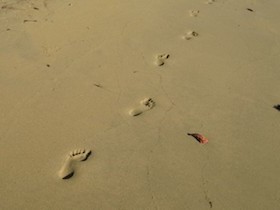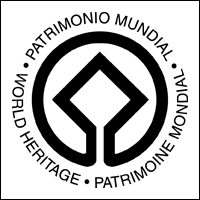WONGA BEACH
WALK. Is on the way to Daintree ( Latitude South 16 deg 20 min,
Longitude East 145 deg 30 min.) at the northern end of Trinity Bay.
Cairns is at the southern end.
It is the only beach in Trinity Bay that you can walk along, without seeing artifacts, and really experience a wilderness feeling. It has a beautiful lush back drop of huge Calophyllum trees interspersed with Coconut palms.

In 1770 Captain Cook named the northern bay's continental Island Snapper Island and the near-by coral cay Low Isles. A 30 mile light house was installed on the smaller cay of Low Isles in 1898.
Looking south from Wonga Beach you can see Island Point which shelters the harbour entrance of Port Douglas. It looks like an island from offshore. The rainforest clad mountain range to the north is called Alexandra Range after a Danish princess who married the Prince of Wales. The rainforest clad mountain range behind Wonga Beach is called Dagmar Range after Alexandra's younger sister, Dagmar. She married into the Russian royal family becoming Empress Marie Fedodorovna. The last three features were named by the discoverer of Daintree, George Elphingstone Dalrymple, a servant of the crown. George was careful enough to keep his masters happy by naming features after them but also considered his fellow mariners following in his wake. Island Point is a good example.
It is the only beach in Trinity Bay that you can walk along, without seeing artifacts, and really experience a wilderness feeling. It has a beautiful lush back drop of huge Calophyllum trees interspersed with Coconut palms.

In 1770 Captain Cook named the northern bay's continental Island Snapper Island and the near-by coral cay Low Isles. A 30 mile light house was installed on the smaller cay of Low Isles in 1898.
Looking south from Wonga Beach you can see Island Point which shelters the harbour entrance of Port Douglas. It looks like an island from offshore. The rainforest clad mountain range to the north is called Alexandra Range after a Danish princess who married the Prince of Wales. The rainforest clad mountain range behind Wonga Beach is called Dagmar Range after Alexandra's younger sister, Dagmar. She married into the Russian royal family becoming Empress Marie Fedodorovna. The last three features were named by the discoverer of Daintree, George Elphingstone Dalrymple, a servant of the crown. George was careful enough to keep his masters happy by naming features after them but also considered his fellow mariners following in his wake. Island Point is a good example.

